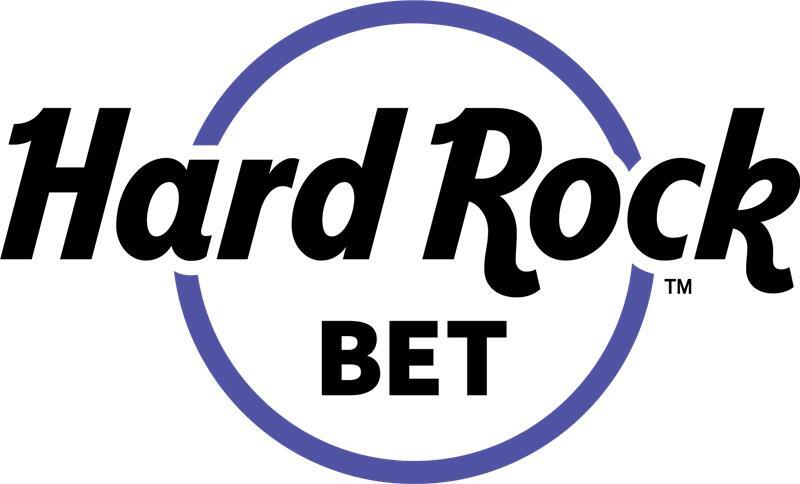Roulette Systems: Popular Betting Strategies Explained
The term roulette systems describes structured betting methods that help players decide how much to wager and where to place their bets based on previous outcomes of a…
Category Ratings
This page contains references to products from one of our advertisers. We may receive compensation when you click on links to those products. Terms apply to the offers listed on this page. For an explanation of our Affiliate Policy, visit this page.
In the United States, players often use systems like Martingale, d’Alembert, Fibonacci, and Labouchere to bring a sense of strategy to the game. These approaches are popular because they help manage losses and take advantage of winning streaks. However, there is no system that can fully eliminate the house edge or influence the outcome of a spin, as each rotation is random.
This guide reviews the most recognized roulette systems. We break down how they operate, including details on bet progression patterns and the impact on win/loss cycles.
You’ll find clear examples using real numbers to show how each system performs over time, along with a look at key risks such as exhausting your bankroll or hitting table limits. We’ll also cover how to manage your funds wisely and play responsibly.
Use what you learn here to make informed decisions about which systems, if any, suit your gaming style or budget. You might find success sticking to one method or blending a few to see what fits your rhythm at the table.
Roulette Casinos With the Highest Safety Rating for US Players
What Is a Roulette Betting System?
A roulette system is simply a set of rules for adjusting your bet size based on how previous spins have played out.
The roulette betting system you select gives you a formula to follow, such as doubling your bet after a loss (like in the Martingale), or moving through a sequence of numbers (as in the Fibonacci system).
The main idea behind these systems is to manage losses and try to squeeze out modest wins over time. It is important to understand that no system can change the underlying house edge of the game.
Now, let’s consider a roulette strategy. It involves choices like picking tables with better rules (such as La Partage), setting clear loss limits, sticking to a fixed bankroll, or avoiding risky bets like the five-number top line.
Strategy is about managing conditions and expectations, while systems are about bet progression.
Roulette systems have been around for centuries. Players in 18th-century France tried to find patterns in the wheel, and by the 1800s, stories of people “beating the system” in Monte Carlo helped fuel the craze.
In the 1960s, mathematician Edward Thorp analyzed these methods and showed they couldn’t overcome the odds over time.
Still, players today continue to use them, especially online, because they bring structure and discipline to what is considered a fast-moving and unpredictable game.
Why the House Edge Never Changes
The house edge in roulette is a fixed part of the game’s design, unaffected by how much you bet or which strategy you use. The percentages below reflect the gap between true odds and the actual payouts:
On a European wheel (37 pockets: numbers 1–36 plus a single 0), the house edge is 2.70%.
On an American wheel (38 pockets: adds a 00), the edge increases to 5.26%.
Since each spin is random and independent, no betting system can overcome this mathematical advantage.
Simple Example:
Let’s say you bet $10 per spin on red over 100 spins on a European wheel.
Total Wagered = $10 × 100 = $1,000
Expected Loss = 2.7% × $1,000 = $27
Even if you change your bet sizes using a system like Martingale or Fibonacci, the expected loss formula stays the same:
Expected Loss = House Edge × Total Wagered
Classification of Roulette Systems
Roulette systems can be categorized into four broad categories: Negative Progression, Positive Progression, Flat Betting, and Hybrid systems.
Each follows a different logic for adjusting bet sizes after wins or losses.
Negative Progression Systems
This system type increases your stake after each loss and tries to recover prior losses with one win. The system appears effective in general, but it can escalate quickly and is vulnerable to table limits, which can deplete your bankroll.
Martingale
Double your bet after each loss to recover all prior losses and make a small profit.
$10 → $20 → $40 → $80 → $160 → Win = $10 net.
- Simple to follow
- Risky if you hit a long losing streak
- Suggested bankroll: $1,000+
Grand Martingale
Same as Martingale, but add $10 to each doubled bet.
$10 → $30 → $70 → $150 → Win = $20–$30 profit
- Higher profit potential
- Burns through cash even faster
- Bankroll: $1,500+
Fibonacci
Add the last two bets after each loss; step back two after a win.
$10 → $10 → $20 → $30 → Win = resume at $10
- Slower progression
- Complex to track
- Bankroll: $500–$700
d’Alembert
Add $10 after a loss, subtract $10 after a win.
$10 → $20 → $30 → $20 → $10
- Easier to sustain
- Slower to recover losses
- Bankroll: $300+
Positive-Progression Systems
This system requires you to increase your bet after a win and return to the original stake after a loss. The goal is to maximize profit with a winning streak and limit overall losses.
Paroli (Reverse Martingale)
Definition: Double your bet after each win, reset after a loss or three consecutive wins.
Ladder + $10 Example:
- Bet 1: $10 → Win
- Bet 2: $20 → Win
- Bet 3: $40 → Win
- Profit: $70 → Reset to $10
Pros: Quick profit during streaks; minimal early risk
Cons: One loss erases progress; highly volatile
Bankroll Needed: 7–10 units
Reverse Labouchere
Definition: Build your betting line with wins, shorten it with losses; the goal is to grow profit over time.
Ladder + $10 Example (starting line: 1–2):
- Bet 1: $30 (1+2) → Win → Line: 1–2–3
- Bet 2: $40 (1+3) → Win → Line: 1–2–3–4
- Bet 3: $50 (1+4) → Lose → Line: 2–3
- Bet 4: $50 (2+3) → Win → Line: 2–3–5
Pros: Scales up on wins; adaptable
Cons: The Line can grow dangerously long; it’s hard to track manually
Bankroll Needed: 30–50 units.
1–3–2–4 System
Definition: A structured four-step progression focused on short streaks and low exposure.
Ladder + $10 Example:
- Bet 1: $10 → Win
- Bet 2: $30 → Win
- Bet 3: $20 → Win
- Bet 4: $40 → Win → Profit: $100
- Any loss resets to $10
Pros: Low risk, easy structure, locks profit after two wins
Cons: Fails if the first or second bet loses.
Bankroll Needed: 5–10 units
Oscar’s Grind
Definition: Increase bet size slowly after wins to grind out 1 unit profit per session.
Ladder + $10 Example:
- Bet 1: $10 → Lose (Net: –10)
- Bet 2: $10 → Lose (Net: –20)
- Bet 3: $10 → Win (Net: –10)
- Bet 4: $20 → Win (Net: +10) → Reset
Pros: Slow and steady; low drawdown per bet
Cons: Long sessions; minimal upside per cycle
Bankroll Needed: 20–30 units
Flat & Proportional Systems
Flat and proportional betting systems focus on calculated stake sizes instead of chasing losses or wins. Players use this option when seeking risk control and to preserve their bankroll long-term.
Unit Sizing:
A unit is a standardized bet amount, often 1%–2% of your total bankroll, used to manage risk and track performance consistently.
Flat Betting:
With a flat betting system, you must wager the same amount on each bet, no matter if you win or lose. Many advantage players favor it for maintaining statistical consistency and minimizing the risk of ruin.
Proportional Betting (Fixed Percentage):
This strategy adjusts your bet size based on a set percentage of your current bankroll. It allows your stake to grow or shrink with your bankroll’s performance.
Kelly Criterion (Fractional Kelly):
The Kelly Criterion is a formula that helps you decide how much to bet based on how big your advantage is and how much money you have. Using a smaller fraction, like half-Kelly, lowers risk while still aiming for steady growth over time.
Sector/Call-Bet Systems
These non-progressive systems target fixed number groups on the roulette wheel or layout, offering structured coverage without adjusting bet size based on outcomes.
The Kavouras Bet places 20 chips on 20 different numbers using a mix of straight bets and split bets. It covers a wide part of the table and can give big wins, but it also comes with a higher risk.
The French call bets like Voisins du Zéro, Tiers du Cylindre, and Orphelins focus on certain areas of the wheel. They use 5 to 9 chips and are easy to place using the racetrack layout in live and online games.
The James Bond system uses the same setup every time: 10 chips on 19–36, 5 chips on 13–18, and 1 chip on zero. It covers 25 numbers and resets after each spin.
Another common method is to bet on two dozen or two columns. This covers about two-thirds of the table and gives more frequent, smaller wins.
Online racetrack layouts make it simple to place these bets with one click, copying how it works in real casinos.
These systems offer structure and coverage without changing your bet after every spin.
D’Alembert Roulette System
The D’Alembert Roulette System is a negative progression method where you increase your bet by one unit after a loss and decrease it by one unit after a win.
It’s slower and more conservative than Martingale, appealing to those with smaller bankrolls and lower risk tolerance. However, it cannot offset extended losing streaks.
Fibonacci Roulette System
The Fibonacci Roulette System follows the famous numerical sequence (1, 1, 2, 3, 5, 8…). You will increase your bets after each loss by summing the two previous amounts. After a win, you move two steps back in the sequence.
It’s less aggressive than Martingale but can still result in large stakes during prolonged downswings.
Labouchere Roulette System
The Labouchere Roulette System involves creating a series of numbers that represent your profit target. You bet the sum of the first and last numbers. If you win, cross them off. If you lose, add the amount bet to the end. Complex but flexible, it suits experienced players seeking structured sessions.
Martingale Roulette System
The Martingale Roulette System is the most well-known progression system. You double your bet after every loss until a win recovers all previous losses plus one unit profit.
It is a simple system, but it requires a large bankroll and is highly risky due to table limits and growth rate.
Mathematical Evaluation & Monte-Carlo Simulations
Below is a visual comparison of bankroll performance over 10,000 spins for three roulette systems:

| System | Final Bankroll ($) | ROI (%) | Max Loss Streak | Bust |
| Flat Betting | 758 | –24.2 | 12 | No |
| Martingale | 3,294 | +229.4 | 10 | No |
| D’Alembert | 17 | –98.3 | 10 | No |
Insights:
- Flat Betting limits loss magnitude and avoids busting, but long-term losses are steady due to the house edge.
- Martingale shows short-term gains but faces high risk and volatility. A single long streak can end a session.
- D’Alembert is safer than Martingale but often depletes the bankroll more slowly, without recovering from extended downswings.
Even with systems, the house edge (2.70% on European wheels) dictates long-term expectations. Increasing or altering stakes cannot change the mathematics of probability.
Practical Implementation in US-Licensed Casinos
If you want to use a roulette system in US casino games, it’s important to consider a few factors. Game speed plays a role in how you use a system.
RNG tables typically take 5-10 seconds per spin, and they are best for high-volume testing. Auto wheels will run at 20 seconds per round. Live dealer tables will stream at around 45-60 seconds per spin. These two options have slower pacing and will work better for beginners.
Many platforms support “Rebet” and “Rebet x2” features, and this can help with automating stake increases. Autoplay is common on RNG games but typically unavailable for live streams.
Loss limits and session caps are part of responsible gambling tools, but keep in mind they can interrupt long progression sequences.
U.S. casinos use standard table ladders:
- Inside bets: $0.20–$1,000
- Outside bets: $1–$10,000
It’s important to consider table limits when using a system such as Martingale. If you hit the maximum table stake in your progression before you recover from the loses, the strategy is not played out.
Always start with a base unit low enough to allow for multiple losses within posted limits.
Common Pitfalls & Misconceptions
The Gambler’s Fallacy is the false idea that past spins affect future ones. In truth, every roulette spin is random and doesn’t “remember” what came before.
Chasing hot or cold numbers doesn’t work either—all numbers always have the same chance, no matter how often they’ve hit.
Some players believe in “dealer signatures,” thinking the dealer’s habits change outcomes. But casinos use strict rules to keep the game fair, so this doesn’t hold up.
Be careful with systems or PDFs that promise “guaranteed profits.” These claims are often misleading and ignore how the game works.
Scams involving betting spreadsheets may tell you to keep doubling your bets, but they don’t consider table limits or how fast you can lose your bankroll.
In the end, no system can promise wins. The best approach is to gamble responsibly, know the odds, manage your money wisely.
Always play for fun, not income.
Bankroll Management & Stop-Loss Rules
Break your total bankroll into smaller amounts for each playing session to help control risk. For every bet, use 1% to 2% of your total bankroll so you don’t run out too quickly.
Choose to set a stop loss. You can pick 10-20% of your budget for the session. This will help you avoid a big loss. You can also choose to set a stop-win amount and stop playing once you have earned a profit.
Keep track of every session by writing down your bet sizes, wins, losses, and results.
This helps you see what’s working, adjust your plan, and stay calm while playing.
Legality & Compliance in the US
Using betting systems is generally legal and does not violate casino regulations. However, card counting and similar advantage play techniques are largely irrelevant in most US casinos due to the use of continuous shuffling and electronic measures.
Some land-based casinos may prohibit edge sorting or other exploit attempts, while often allowing betting progressions, such as Martingale. Importantly, betting bots and macros are strictly prohibited under nearly all operator terms and conditions.
Players should always review casino rules carefully to avoid any issues.
Matching Systems to Wheel Variants
French roulette has special rules like La Partage and En Prison that help players just a bit with a lowered house edge.
If you make an even-money bet and the ball lands on zero, you either get half your bet back or it stays for the next spin.
This lowers the house edge to about 1.35%, which can help during losing streaks.
On the other hand, some U.S. casinos use triple-zero wheels. These have a much higher house edge of around 5.26%. This means players lose more over time, and progression systems become much riskier.
Games like Lightning or Quantum Roulette offer random multipliers that boost certain number payouts. The games can lead to big wins, but do not lower the house edge or guarantee a system will work.
They just make the game more unpredictable.
Tools, Trackers & Further Resources
Consider using free online simulators to practice and test betting systems, so there is no risk involved. Use Excel or Google Sheets bankroll trackers to note your bets, wins, losses, and details of the session.
Once you feel comfortable with a system, you can use it with real money play.There are additional resources you can use to increase your understanding of the betting system, such as The Mathematics of Gambling or Beat the Dealer, by Edward Thorp. Read these books to learn more about probability and advantage play theory.
Responsible-Gambling Considerations
Always practice responsible gambling. Set deposit limits before playing to minimize risk. Use 24-hour time-outs to pause activity, and consider self-exclusion if gambling becomes an issue.
Remember that no betting system can fix or control problem gambling.
Use the national US resources below if you need assistance with gambling addiction:
- Gamblers Anonymous
- National Council on Problem Gambling
- National Problem Gambling Helpline: 1-800-522-4700
Main Takeaways
Roulette systems help bring structure to your betting, especially during fast-paced or emotional sessions. Whether you’re using negative progression systems like Martingale or Fibonacci, or safer methods like flat or proportional betting, every system comes with its own level of risk and bankroll demand.
No system can beat the house edge. The odds stay the same no matter how you change your bets. Systems like Martingale might recover losses quickly, but they can burn through your bankroll fast if you reach the table limit or hit a losing streak. Positive systems like Paroli or 1–3–2–4 carry less risk but rely on short streaks to work.
Flat and proportional bets are more stable long-term. Sector and racetrack systems like Voisins du Zéro or Kavouras offer broad coverage without needing to change your bet after every spin.
Roulette systems are tools, not magic, so be sure to use them wisely, track your play honestly, and always keep the math in mind.
Quick Recap
- All systems face the same house edge.
- Negative progressions are risky.
- Positive progressions need streaks to work.
- Flat/proportional betting is safer for most.
- Sector bets give good coverage with fixed stakes.
- Practice with free tools before real play.
- Always play responsibly.
FAQs:
Which roulette system carries the lowest risk of ruin with a $500 bankroll?
Flat betting small units (1%–2% of bankroll) carries the lowest risk of ruin compared to aggressive progressions.
Can the Martingale overcome the house edge on La Partage (French) tables?
No, Martingale reduces variance but cannot overcome the inherent house edge.
What is the practical difference between “table coverage percentage” and “return on total action”?
Table coverage is the portion of numbers you bet on; return on total action measures expected returns relative to total money wagered.
Are betting progression systems permitted at US live dealer tables, or can the pit ban me?
Betting progressions are generally permitted, but aggressive or suspicious play may result in dealer or pit intervention.
Do US regulators view roulette systems as a form of advantage play?
No, most systems are viewed as betting strategies, not true advantage play, such as card counting.
Can random multipliers in Lightning or Quantum Roulette offset a Martingale loss chain?
No, multipliers increase volatility but don’t guarantee recovering losses in a progression.
How often do table limits reset on automated (Slingshot) wheels?
Table limits typically reset with each spin, but maximum bets remain constant according to casino rules.
Is there any modern wheel bias or dealer signature method that still works in 2025?
No, modern casino measures have largely eliminated exploitable wheel biases and dealer patterns.
Why do casinos publish hot and cold number boards—are they meant to steer bets?
Yes, these boards encourage biased betting, increasing the house’s edge through player misconception.
What is the safest way to test a new system without risking real money?
Use free online simulators or play in demo mode on casino apps.
Do operators track system usage and restrict bonuses or cashback when they spot it?
Some operators monitor patterns and may restrict bonuses if systematic or abusive play is detected.
Are there mobile apps that can automate Fibonacci or Labouchere staking legally in the US?
Most operators prohibit automated betting tools, making such apps generally non-compliant with the terms and conditions of US casinos.
For almost two decades, Sadonna has remained at the forefront of the gambling industry in the US and abroad, covering the latest news and legal updates. Sadonna’s goal is to provide sports bettors and casino players with premium content, including comprehensive details on the US industry.




















